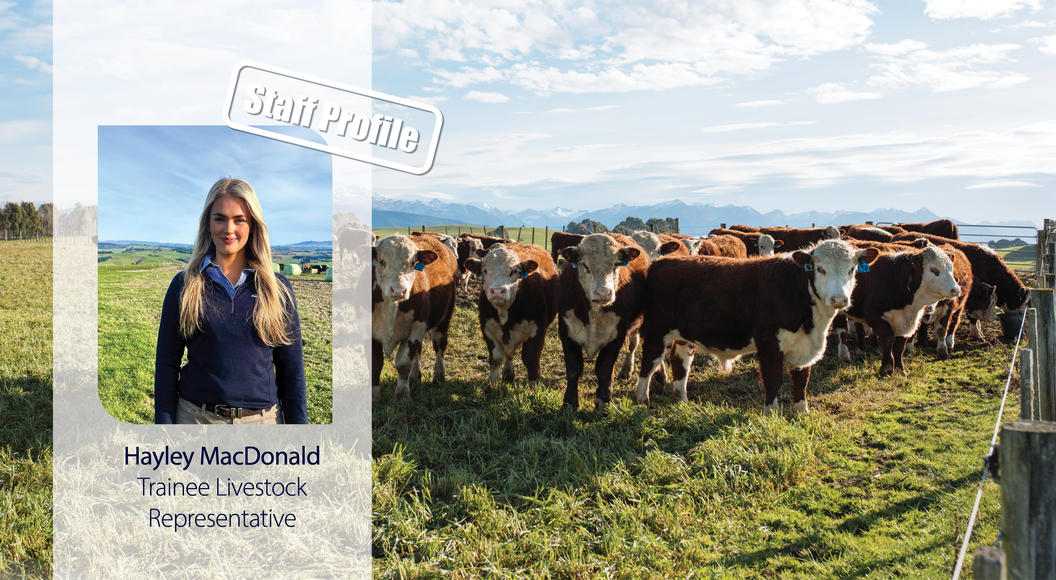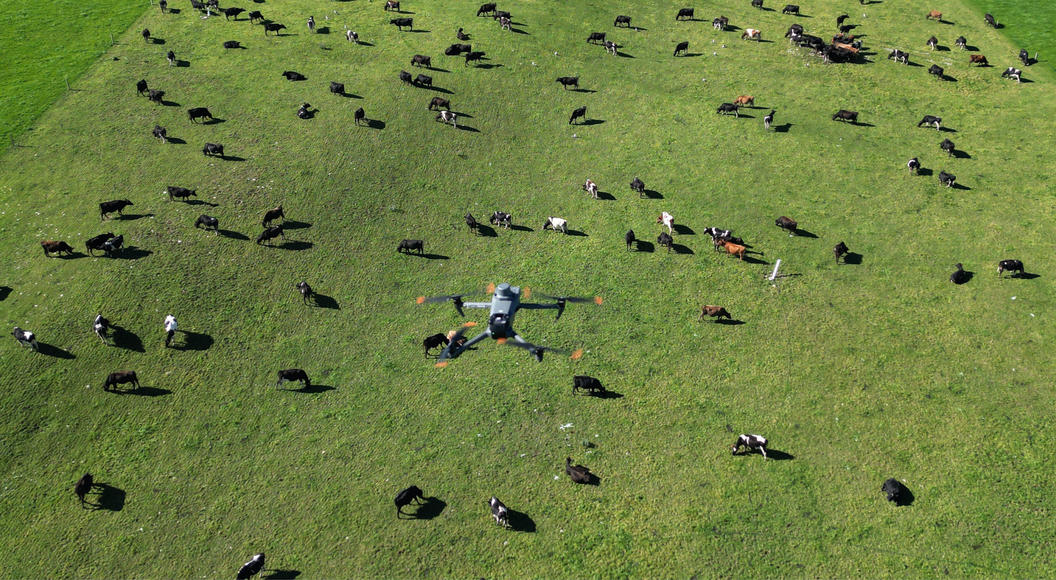
Momentous deer career coming to an end
After 50 years in livestock, including 41 with PGG Wrightson, and recognition in 2022 for his contribution to the industry, Ron Schroeder calls it a day.
Ron Schroeder loves deer. He farms them, sells them, purchases them, hunts them, dreams them, eats them. “Ron looks like a deer, and even roars like one,” or so says one of his long term clients. After 50 years in livestock, including four decades with deer, most as PGG Wrightson Livestock’s Upper South Island Deer Specialist, Ron is retiring.
When Ron was at Lincoln College, now University, in the early 1970s deer were not on the curriculum.
“Some lecturers had a few to study, and we had one session looking at them, though that was it,” he says.
His initial experience was a few years later, visiting a property between Invercargill and Bluff.
“A farmer was holding a dozen weaners captured in Fiordland. Without fencing, they were in his garage. When I went back the following year, the stock numbers had increased, the deer were fenced, and I realised there were prospects for something bigger.”
Based in Seddon and working as New Zealand Farmers’ Co-operative’s Marlborough sheep and beef representative, Ron bought and sold his first deer in 1978. Helicopter operators had recently started capturing live feral deer to stock farms, attracting significant money from city investors.
“Venison was the focus, building bloodstock to underpin the industry, though the market was paying more for stock than the deer were worth as venison.”
To farm deer you needed a licence. Ron sourced stock from several licence holders: Mount Hutt Station, High Peak Station, Haldon Station, Glynn Wye Station, Mount Peel Station and Mount Somers Station have remained clients since.
When Farmers’ Co-operative and Pyne Gould Guinness merged, Ron received a call.
“It was Humphrey Gould. Until you’d had a couple of drinks you addressed him as ‘Mr Gould.’ He invited me to Christchurch and asked me to set up a deer operation. I wanted to carry on growing with my clients, and most were already with Pyne Gould for other business, so it was an easy change.
“I agreed, and was out the door when Mr Gould said ‘Wait a minute, we haven’t talked about salary.’ I told him I knew he’d look after me, and the salary wasn’t the point,” says Ron.
Early on, Ron’s covered the whole country: as the industry expanded, his ‘patch’ reverted to Nelson, Marlborough, Canterbury and South Canterbury. One early project was establishing a Pyne Gould deer farm at Insignis Park, west of Christchurch. In those buoyant times the sky was the limit.
“At one Queenstown industry conference you couldn’t work out whether more Range Rovers or more helicopters were lined up outside. Heading back from a scenic trip on Lake Wakatipu, the Earnslaw noticeably listed in the water because the deer delegates were crowded on the side of the deck where the drinks were served. That evening the conference organisers brought in several old-fashioned dinghies packed with ice and full of crayfish and oysters.
“We had plenty to do with high-profile business people from Wellington and Auckland, including some who seemed to have so much money, until they went bust.”
After Roger Douglas removed the tax incentives in 1984, the industry took a year to readjust, developing a more realistic basis for values.
“Venison is generally ahead of the lamb schedule. In the early 2000s it was $11 per kilogram, now consistently sitting between $9.50 and $10.50. Velvet is a co-product. On a per stock unit basis, profitability for velvet compares favourably with dairy. I was a velvet grader for 15 years, and back in mid 90s heavily involved in setting up grading guidelines for the industry. Velvet used to average three kilograms per stag. After the industry imported some new bloodlines, it now ranges from five to six kilograms.”
Ron can take some credit, having spent a good part of the 1980s sourcing the best velvet genetics.
“For five years from 1986 I made 18 trips throughout north and eastern Europe, Canada and the United States, taking clients to acquire stags that would improve existing velvet genetics.”
Most imports were from Canada, Germany, Denmark and Yugoslavia, which is now Croatia. One client on those trips, Graham Carr of Peel Forest Estate, South Canterbury, remembers it well.
“It was a huge exercise. After negotiating on our behalf, Ron was involved with the intricacies of exporting the deer back to New Zealand via a quarantine protocol in England.
“In Croatia Ron negotiated with the locals. Early in the morning and a foot of snow on the ground, we had some captured deer in a makeshift corral. Out in this paddock the workers were putting up a fence, with a fire cooking chunks of fatty bacon, which they enjoyed with fresh bread and raw onions.
“One big stag smashed up his nose and teeth. The Serbs in their army great coats were trying to force us to pay a ridiculous quantity of Deutsche Marks, with no give or take, threatening to cancel the whole project. Somehow Ron managed to get them to back down, and we left that stag behind,” says Graham.
Ron’s true element is back home.
“I am privileged to spend time on iconic high country properties that most people never see: Mount White Station, Erewhon, Mount Potts, Mount Arrowsmith. I’m now dealing with and mentoring the children of long term clients. I’ve seen them from babies, and now they are my clients, with their parents in the background. Seeing these progressive young farmers coming through over the last 20 years, I’m very fortunate.”
In 2022 Ron received the New Zealand Deer Industry Award, the first time it has gone to anyone in the stock and station industry.
“That was a humbling experience, totally unexpected, completely out of the blue, and the highlight of my whole career.”
Two of his clients, prominent deer farmers Bob Kingscote and Colin Guild, nominated Ron, supported by numerous other industry figures, commending his exceptional industry knowledge, inter-personal skills and strong connections throughout the industry.
Bob recollects when Ron drove several clients over Arthur’s Pass to purchase sire stags from a Vietnam War veteran’s Lake Brunner deer farm.
“When we arrived mid-morning the stags were in the bush. Since it was getting hot, no feed from the farmer could entice them out, so we settled in with cups of coffee and lunch, waiting for the day to cool. At one stage a helicopter flew over. The Vietnam vet rushed for his rifle to shoot it down, saying ‘bloody poachers!’ Ron somehow stopped him.
“Eventually it cooled off and the farmer got the stags out, herding them in a jeep at dangerous speeds with airborne antics over creeks, and us holding on. With the stags finally in the yards, all with broken velvet, Ron managed to purchase a stag each. From entering the farm to driving out took 11 hours and 40 minutes.
“Going back next year the price had doubled, so no sale. The farmer lost his temper. Ron took all his shouting and abuse on the chin,” says Bob.
Such tales are why the miniature version of the permanent Deer Industry Award now sits in pride of place on Ron’s coffee table.
Having started in a Holden Belmont, going through an estimated 20 company vehicles, to a smart Hyundai Santa Fe in which he has covered around 80,000 kilometres per annum in recent years, Ron retires at the end of June, planning to do a little more on the Cheviot lifestyle block he and wife Jacqui have called home since 2014, keeping his hand in alongside a young client growing velvet, and rekindling his love of fishing.
Luke Thompson takes over from Ron, picking up on a long term interest in deer he has pursued alongside a professional rugby career in Japan.

Ron holding deer velvet.


